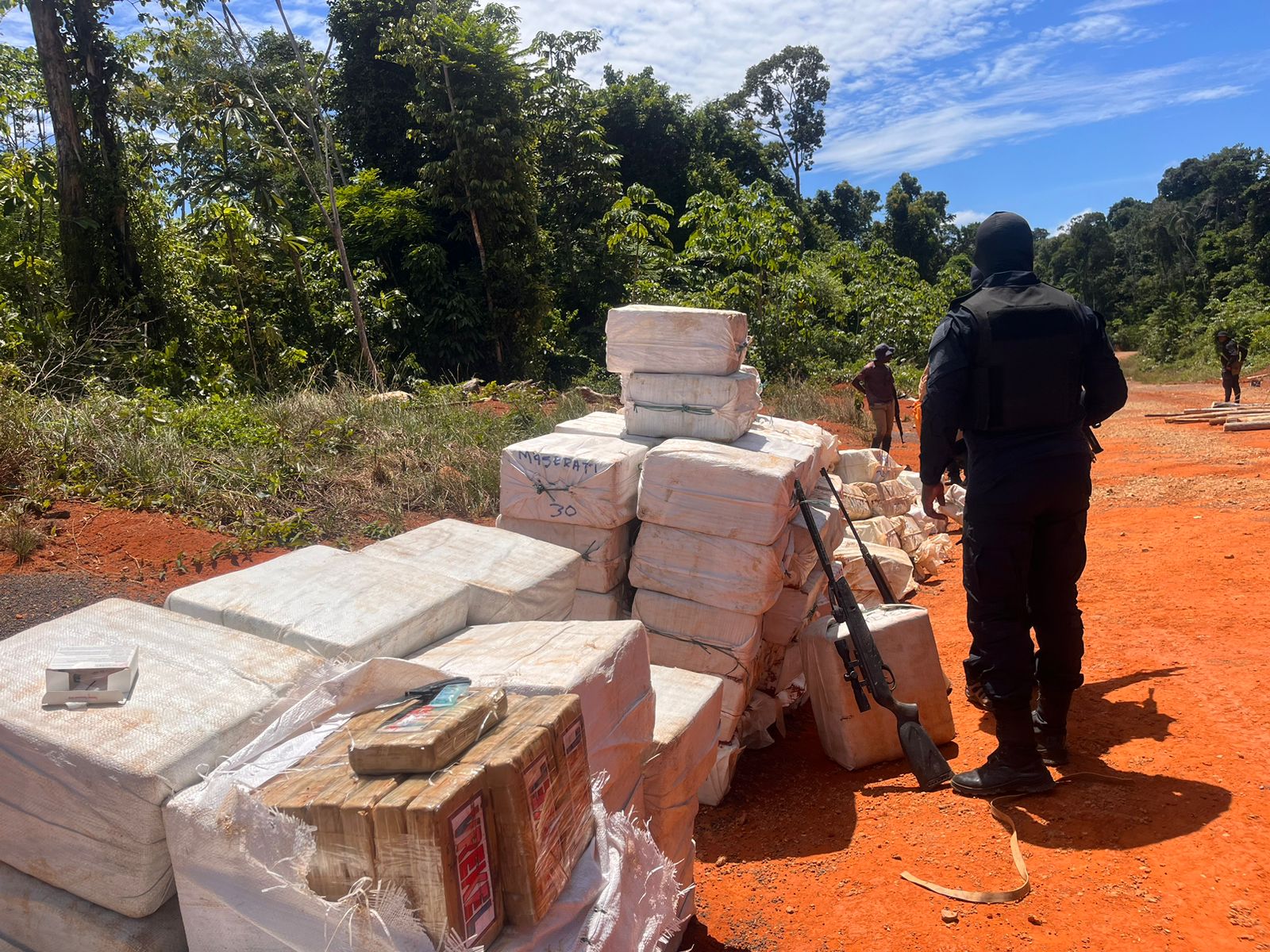
In 2024, a remarkable surge in the discovery and destruction of illegal narcotics was recorded by the Customs Anti-Narcotic Unit (CANU), with approximately 6,000 kilograms of drugs seized.
This figure includes 5,094 kilograms of cocaine, among which four and a half tonnes were found buried in hand-dug pits in Region One (Barima-Waini). These cocaine seizures alone are estimated to have a street value of US$195 million.
The haul also comprised 1,643 kilograms of cannabis and 992 grams of methamphetamine, further highlighting the diversity of illegal substances circulating within the region. In total, 71 individuals were arrested in connection with these operations.
Minister of Home Affairs Robeson Benn provided an assessment of the situation during the Ministry’s end-of-year press conference at the Arthur Chung Conference Center, Liliendaal on Monday. He described the findings as “dramatic,” pointing to the significant increase in cocaine seizures, which he attributed to heightened efforts against drug trafficking.
“So we have had a dramatic increase in the cocaine seizures and also the work in relation to drug trafficking,” Benn remarked.
He was clear, however, on one critical point: the local demand for cocaine and marijuana remains minimal.
“The demand is not in Guyana for cocaine, marijuana that is being produced in some places,” he stated, hinting at the export-oriented nature of the narcotic trade.
The fight against the pervasive drug trade has involved not only local law enforcement but also international collaboration.
According to Benn, foreign nationals have been charged, and several aircraft linked to drug smuggling have been destroyed in the course of these operations.
While acknowledging the successes, Benn also emphasised the need for increased international cooperation, noting that local authorities require “more physical support” from their overseas counterparts to more effectively tackle this growing issue.







